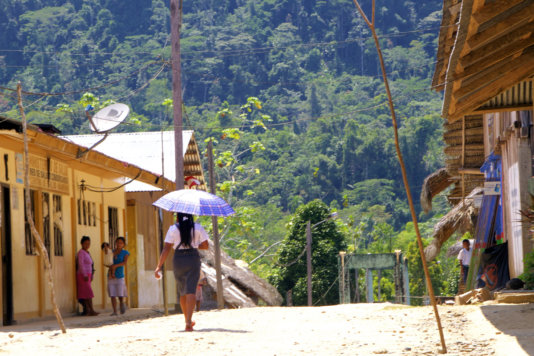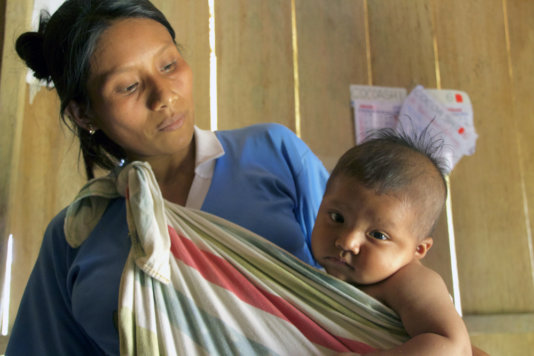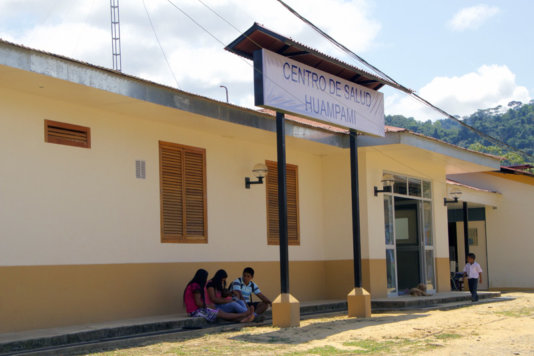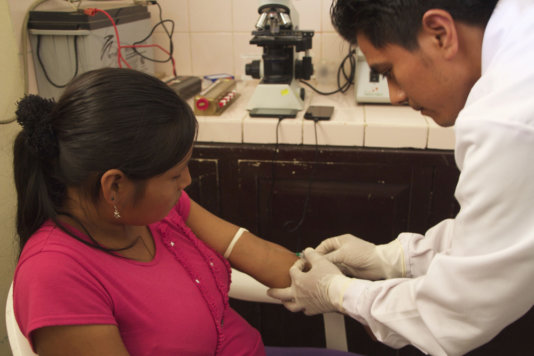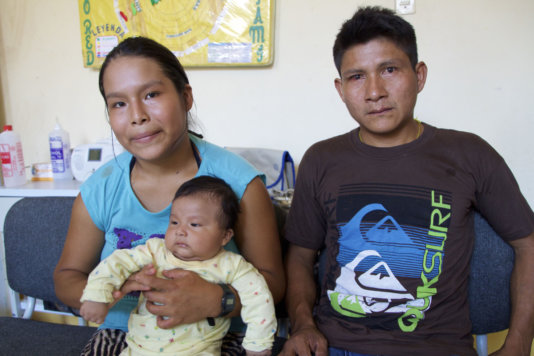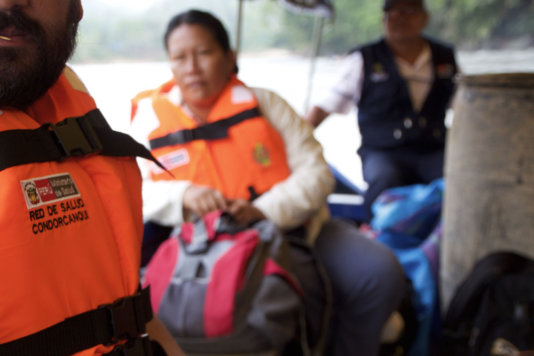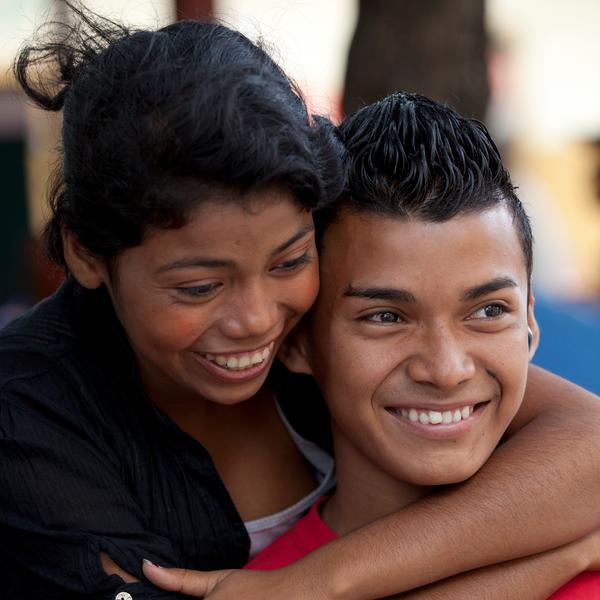- About
- Topics
- Picks
- Audio
- Story
- In-Depth
- Opinion
- News
- Donate
-
Signup for our newsletterOur Editors' Best Picks.Send
Read, Debate: Engage.
| January 05, 2016 | |
|---|---|
| topic: | Health and Sanitation |
| tags: | #Amazon, #HIV, #indigenous people |
| located: | Peru |
| by: | Pablo Pérez Álvarez |
Saúl Sejekan knows that an AIDS diagnosis is a medical fact, and "that the person accused of witchcraft is innocent. Our tradition says that the accused one has to leave the village. As none of my neighbours understands anything about this infection, I wanted the doctor and the local authorities to explain to them that AIDS is a disease”, he explains. “If I defend this person without any proofs, the people will say that I have to pay for the life of thedeceased."
The beginning of an epidemic
Until a few years ago, Awajun and other Amazonian indigenous people of Peru were unaware of HIV and AIDS. The lack of communication channels made the access to information complicated and the interaction with the rest of the country limited. Sexually transmitted diseases, and particularly AIDS were completely unknown among them. And until a decade ago, no cases had been detected in the Peruvian indigenous Amazonian regions.
But the improvement in infrastructures and the more frequent entry and exit of persons in these areas brought the dangerous virus to the Amazon. And - as happened in the Western world in the 80’s - fastly, it has found a suitable breeding ground for a quick expansion and caused, due to missing knowledge and prevention, a major health problem for the region.
“We detected the first cases 8 or 9 years ago”, says Mario Tavera, Ministry of Public Health adviser, who was working in a maternal health program for Unicef in Condorcanqui, the northern Peruvian region inhabited by Awajun and Wampi people at those times.
When they applied the first HIV quick tests, they surprisingly found several positive cases in a place being supposedly free from the virus due to its isolation. When the number of tests increased, the results showed that the infection was spreading rapidly.
The Peruvian Ombudsman, the Indigenous People Program chief, Daniel Sánchez, warns that “there are several areas affected, but there isn't yet enough information about it. What we have is some outbursts in certain places revealed by some people deaths”.
Figures don’t say it all
Condorcanqui, taken as a model for the health strategy against AIDS in the Amazon, is the place where authorities have got more information. From 2012 to 2014, almost 10,000 people took the HIV quick tests. The percentage of positives varied from 1.32% in 2012 to 2.1% the following year. Carlos Benites, HIV national strategy coordinator, admits they don’t know the percentage of people who may be infected, but they use 2% as a reference figure to foresee, how many treatments they’ll need for the area. That percentage is the same as for the sexual workers, a category at risk when we talk about AIDS. In the Peruvian general population, the percentage of infected people is 0.23%, similar to the rest of Latin American countries.
“We don’t think that in any case we’ll have rates over 5% of positive cases, but we don’t reckon also a proportion as low as for the general population”, Benites admits.
Most of Condorcanqui villages and the nearby settlements are reached only by the river - after several hours or even days of travel from the regional chief town Santa María de Nieva. This town is the only one connected by road to the rest of the country, which was finished in 2014 and takes you six hours to the nearest place called Bagua, with a population of 30,000.
A disease on the route of civilization
More and more - mainly young Awajuns using this new infrastructure to get out of their villages to study or for finding work. In the last years, many of them have started to get back to their villages and sometimes AIDS or other sexually transmitted diseases coming back with them.
That was also the case of Esli Kantuash (32 years old), who was travelling around Peru and working in several jobs until he decided to return to his village Kusu Kubain (around eight hours by boat from Nieva). He got married and when his wife became pregnant, they went to the local health station and found out that they both have HIV.
“When they told me that, I felt very sad. I thought about killing myself and about separating from my wife. But the doctor told us that people with AIDS can live on drugs. Now we are both calmer”, Esli remembers.
The Ministry of Public Health adviser Mario Tavera sees also a new awareness of homosexuality within the Amazonian indigenous people. He assumes that because of the poverty the Awajuns and other Amazonian indigenous have to live in “many not homosexual young men have sex with men in exchange of money, food or clothes. To them, that’s not prostitution, as they don’t have that concept in their culture”, Tavera explains. “These men get the virus and have sex with their regular sexual partners and so we have cases of young women infected."
Another way how the virus comes to the Awajun is according to surveys the increasing arrival of people from outside to the area: merchants, public servants like teachers or medical staff or the workers for oil and mining companies.
When the disease comes from the West, why trust their medicine?
In order to stop the further spreading of HIV, the Ministry of Public Health offers an early treatment to the positive cases found via the quick tests because a definitive confirmation can take months as the tests must be sent to Lima. There are also cesarean operations to all parturient women infected. But it turns out, there are not only geographical barriers in the fight against HIV, like the dispersion of the villages in the jungle or the inconvenient means of transport. There are also many cultural obstacles. Language is obviously a major problem, as not all the Amazonian indigenous understand Spanish and almost all the doctors are Hispanic speakers coming from other parts of Peru. And they have also to deal with several local traditions.
Many natives distrust the Western health system and they turn first to their traditional healers, who ground their knowledge in medicinal plants. However, no plant has proved so far to be effective against AIDS. Often it is too late when the infected go to the government health stations.
But the biggest ally for the growing HIV infections is the sorcery in the Amazonian areas. It’s difficult for the Amazonian indigenous to understand this virus - completely unknown only a few years ago and so different from any other disease they know. This, mixed with the historical distrust towards the government health system let them mistake the AIDS symptoms and puts them down to sorcery.
This was verified by an inspection in Situ in 2014. It all starts with the lack of understanding that someone is suffering from HIV and shows no visible symptoms. “They say: ‘You tell me I’m sick, but I don’t have any symptoms. How is that possible?”, says Daniel Sánchez. “And when this is really a disease, why isn’t there a cure, but a pill I have to take for the rest of my life?” Often the conclusion is, then, that’s not a disease, that’s an evil spell. But after a long work of conscientization and many meetings with Apus, the Awajun are beginning to be aware of AIDS and its risks.
“There have been big changes in the last time because of the many deceased: women, children … and unfortunately, more and more people diagnosed with AIDS”, says Tavera. Still, even many of them admit now the existence of AIDS, they nevertheless believe that sorcerers are taking advantage of it to make their spells and get away with it.
And the number of people still denying HIV nevertheless remains high. Celia Jima is Awajun and adviser of the Amazonas government and also responsible for the department that includes Condorcanqui. She, who has worked for the health public system in Condorcanqui, regrets that in some meetings with locals even school teachers “say that there is no HIV, that it’s an invention from Europe to get money”.
“As we are here wondering and wandering about if it’s or it’s not sorcery, the HIV is spreading more and more. And this disease doesn’t mind about age, race, religion or if you are from an indigenous Amazon region”, she warns.
By copying the embed code below, you agree to adhere to our republishing guidelines.
